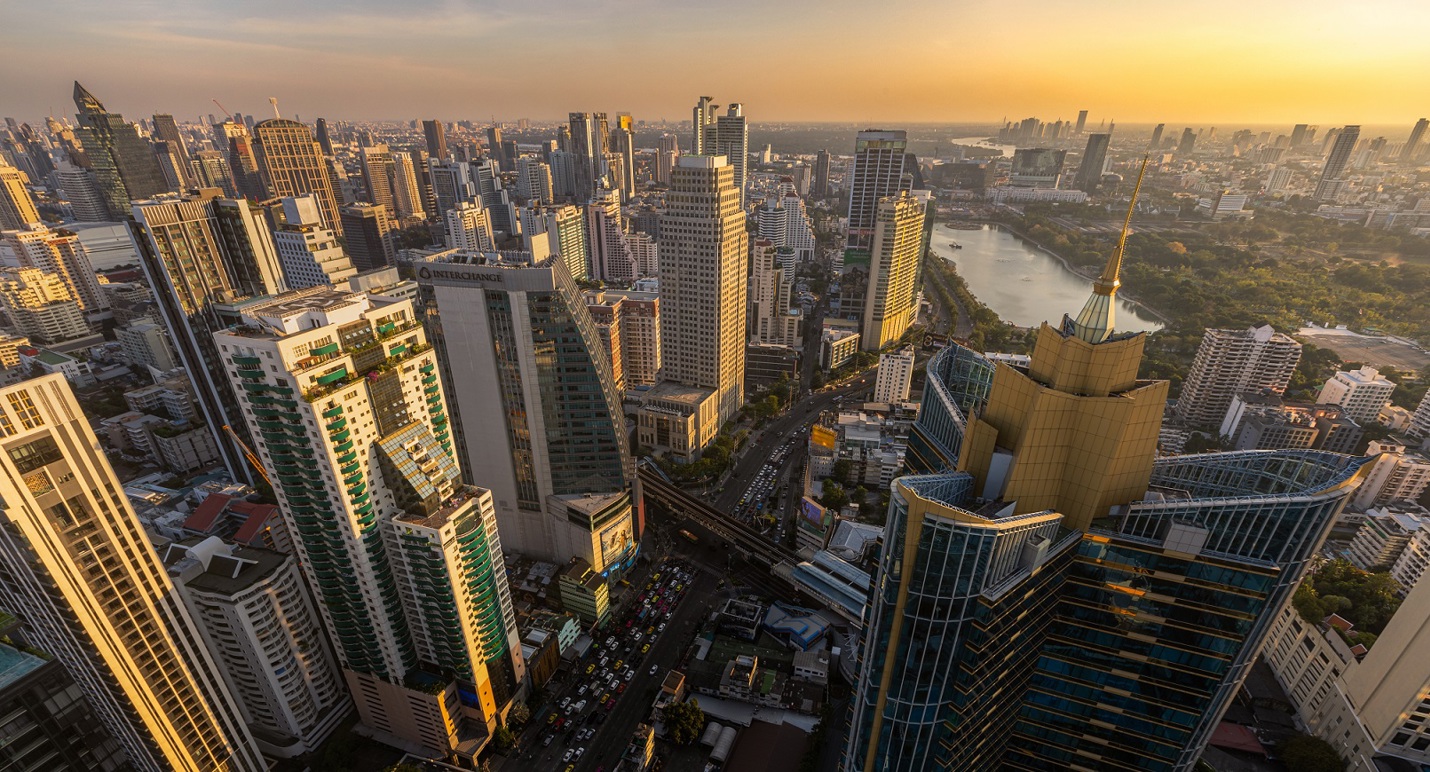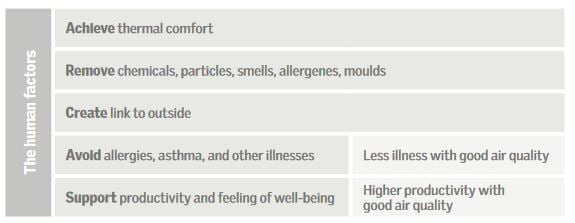Dumping page for unused blocks

What does our body need?
To stay productive and healthy, we are also careful about what we consume in the form of fluids and food, but we rarely think about all the air we consume with each breath.
On average, an adult male with a sedentary occupation will breathe about 15 m3, or roughly 15 kg of air, drink 1.5 litres, or 1.5 kg, of water and eat about 0.75 kg of solid food per day. Hence, the weight of breathed air constitutes about 87% of the total biological mass turnover every 24 hours.
The evolution of human health and the indoor climate
Human beings are not adapted to the conditions or temperatures at polar latitudes, even though parts of these regions have been populated for several thousands of years.
The ideal temperature for a naked person at rest is about 29°C: a stable temperature found in the mountain and savannah landscapes of Africa, the probable origin of our ancient ancestors.
Without clothing and shelter, humans could be regarded as a tropical animal that could only survive in a narrow zone along the equator. When our ancestors migrated north, not only was proper clothing needed but a protective shield from the outdoor climate also had to be developed. From this came housing and building technology that began to evolve and adapt to very challenging winter climates.
The indoor environment is not only vital for our survival, health and well-being but has also helped the human species to thrive and spread geographically.

Everyone's reaction is different
A person's reaction to chemicals depends on several things, including individual health, heredity, previous exposure to chemicals including medicines, and personal habits such as smoking or drinking. It’s also important to consider the length of exposure to the chemical, the amount of chemical exposure, and whether the chemical was inhaled, touched, or eaten.
Temperature and productivity
Numerous different studies have been done to quantify the relationship between operating temperature and productivity. However, it is difficult to design good methods for performing this type of test. One of the more referenced studies on the relationship between air temperature and performance shows that on average, performance increases during office work with the temperature up to 21-22 ° C and then decreases by about 2% per degree temperature increase Ref. (Seppänen et al. 2006)
However, from an productivity point of view, the optimal temperature does not necessarily coincide with what is perceived as good comfort.

Buildings, like humans, need to breathe.
The reason why ventilation

There no simple solution anymore
We no longer live in times and environments where it was simple to bring fresh outdoor air to our bedrooms just by simply opening a window.
We live in times where the outdoor air is no longer what it used to be. Today, we live in places where the outdoor air quality is not good - there are high levels of various air pollutants such as carbon monoxide (CO), nitrogen dioxide (NO2), ozone (O3), sulphur dioxide (SO2), and particular matters (PM2.5 and PM10). Noise and light pollution incoming from the outdoors to our bedrooms can also disturb our sleep throughout the night.
We live in environments that are different today. We have to remember that our buildings are built in very airtight and well-insulated way - in order to be energy efficent and keep our energy bills low as there are limited natural non-renewable resources and often also due to the variety of energy crisis. Therefore the outdoor air has to be brought into our buildings in a mechanical way - as securing a good amount of airflow coming into our bedrooms is crucial to our health and well-being. And we can do that by using mechanical ventilation systems, and in this way we can also control the indoor air quality in our bedrooms to get a good night of sleep.